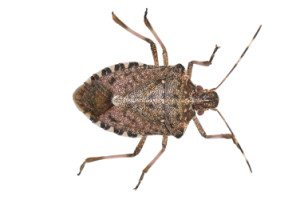
Shield shape with protruding head and banded antennae
ColorRange of browns with different markings – cream, gray, copper, black and/or bluish
Size1.5 – 2 centimeters long
HabitatIn and around host plants and agricultural food sources; indoors when cooler
Interesting FactsStink bugs get their name because of their ability to emit a pungent odor through holes in their abdomen when threatened